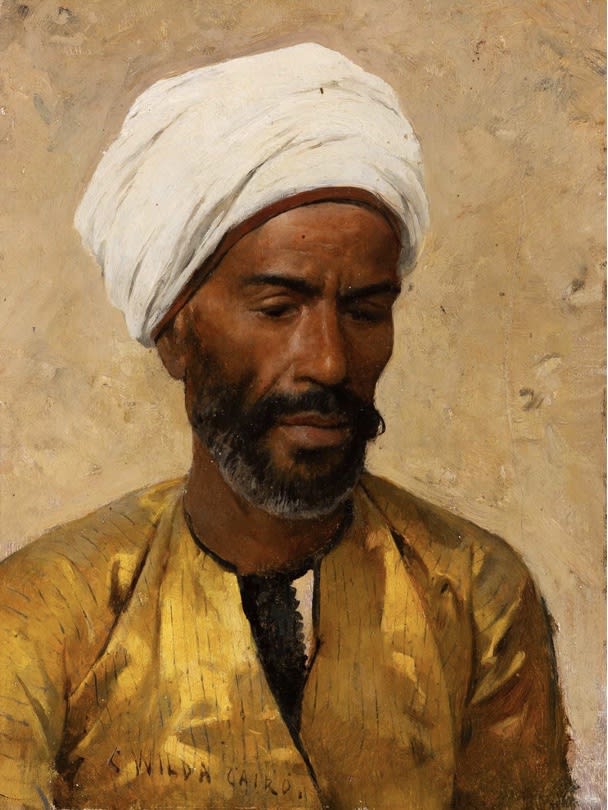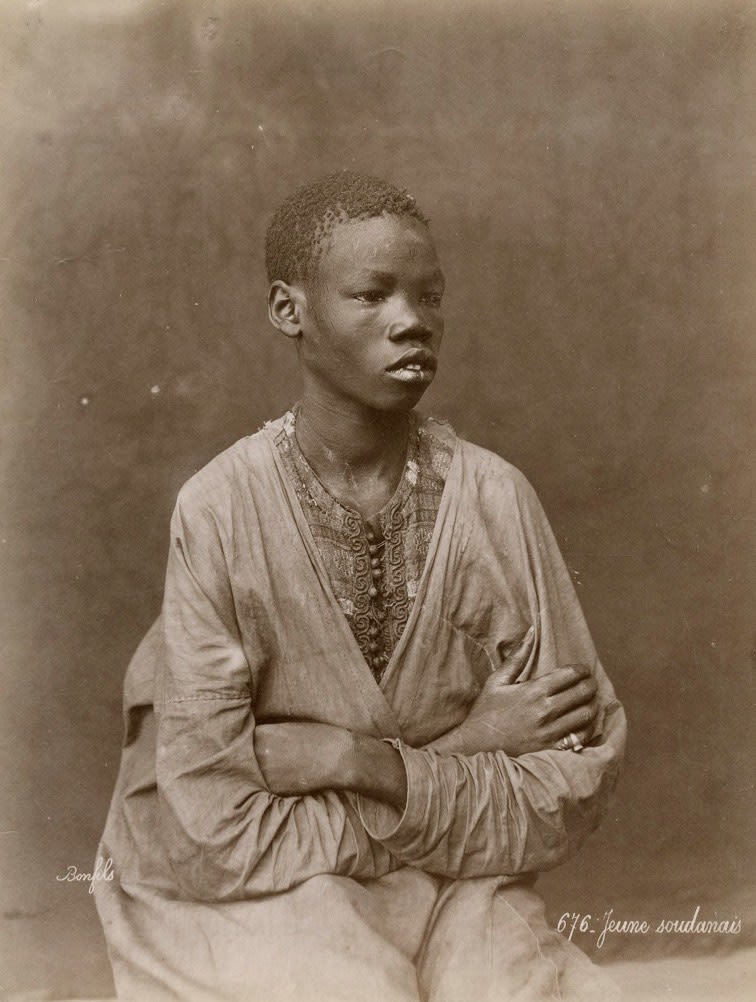European School, late 19th century
Portrait of a boy, looking down
Oil on panel
36.4 x 25.8 cm. (14 ¼ x 10 in.)
Portrait of a boy, looking down
Oil on panel
Portrait of a boy, looking down
Oil on panel
36.4 x 25.8 cm. (14 ¼ x 10 in.)
Portrait of a boy, looking down
Oil on panel
36.4 x 25.8 cm. (14 ¼ x 10 in.)
Provenance:
Private Collection, Paris.
This delicate study of a young boy, eyes cast downwards, likely dates to around 1880 and was painted in North Africa. The author is unknown, though given the very high quality of the painting, we are likely looking at the work of a leading Orientalist of the late 19th century.
Compositionally and technically, the painting has much in common with the work of Austrian Orientalists, such as Carl Leopold Müller, Rudolph Swoboda, Franz Xaver Kosler and Charles Wilda (fig. 1), all of whom made repeated trips to Egypt from the early 1870s to the late 1890s. Their oeuvre is replete with bust-length depictions of the locals they encountered, usually, as with the present work, somewhere between an atmospheric study and a strict portrait, which were often, though not always, made as preparatory works for busy scenes of everyday Cairene life. Also comparable with these works is the way in which here the face is more polished and built up, whereas the clothes are executed with freer, looser brushstrokes. The scumbled, light background we see in this painting also finds parallels in the works of these Austrian Orientalists.

Fig. 1, Charles Wilda, Portrait of a man, oil on panel,
27 x 21 cm, Private Collection
If the author is Austrian, then the work would have almost certainly have been executed in Egypt. Though at first glance the thick material of the sitter’s garments is perhaps more readily associated with the Maghreb, contemporary photographs do show that comparable items were worn by the inhabitants of Egypt (fig. 2). Most black Egyptians are ethnically Nubian, an ancient people originally from the south of modern Egypt and northern Sudan, who had long traded with, and travelled to, the Nile Delta. In the late 19th century, as of today, black Egyptians formed an important demographic within the country and feature prominently in many of the genre scenes of Müller, Kosler et al.

Fig. 2, Felix Bonfils, Portrait of a Sudanese boy, albumen
print, Private Collection
